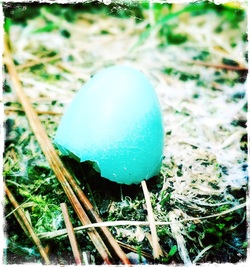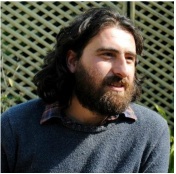ASSAY: A JOURNAL OF NONFICTION STUDIES
2.2
2.2
Introduction: The Great Lung
|
|
What is the self and what does it have to say for itself? For the most part the answers to these questions are narratives of individual lives, struggles, epiphanies. Narratives navigate solid unproblematic bodies through comfortably familiar natural and social landscapes. The preoccupations of nonfiction writers lie in how stories are told and by whom, in what is being told and how true it is. In The Art of Time in Memoir, Sven Birkerts draws a distinction between autobiography and memoir. The former is “the line of a life” (Birkerts 53) while the latter emphasizes life remembered and what the structures of that memory reveal about the life narrated. What goes without saying in Birkerts’ analysis is the underlying concept of the self upon which both forms are predicated. Both autobiography and memoir are self-narratives. Though one may rely on external social “facts” and the other may rely on internal emotional “truths,” neither could exist without a “self” at their center. But what is this centerpiece? The question seems ridiculous and the answer self-evident. Clearly the center of autobiographies and memoirs are individual people.
And yet, Maurice Merleau-Ponty, in Phenomenology of Perception, writes of the self that “it is as if my mouth were connected to some great lung outside myself which alternately calls forth and forces back my breath” (qtd. in Abram 55). This is a radical reconfiguration of the landscape of the self, where the easy bodies of autobiography become difficult and the steady minds of memoirs become uneasy. When the lung is “outside,” the body recovered and the mind remembered enlarge, and agency becomes dislocated when breathing lies in exhalations “call[ed] forth” and inhalations “forc[ed] back.” The self tells its story, whether as autobiography, lyric, essay, memoir, or some other form, and in the body of “the great lung” these songs are all the tunes of a crazy person talking to themselves. If a self were to dive beneath concerns of form, authenticity, and truthfulness in what it says, and rather question just what it itself is and what/how/why it should say, then a whole exciting world of narrative possibility opens up. Underlying the analyses of the works below is a phenomenological approach in which, as deep ecologist Neil Evernden puts it, “we are not talking just about observable interactions between subjects and objects but rather about a very complete interrelation of self and world, so complete that the world could serve as a definition of the self” (Evernden 81). When considering the question of just what comprises a “self” one necessarily has to consider how the “self” relates to the “not-self.” Anthropologist David Abram, in reviewing phenomenological concepts from an ecological perspective, writes that the “body is a sort of open circuit that completes itself only in things, in others, in the encompassing earth” (Abram 62). It is no accident that these two quotations, from Neil Evernden’s Natural Alien and David Abram’s Spell of the Sensuous respectively, have as their subject the relationship of humans to the natural world. The following texts ultimately search for a mode of self-enunciation that eludes/undoes/repudiates narratives of self founded in definition through delineation, in violence as foundational utterance, and move the human toward the non-human as the primary axis upon which to consider “self”-hood.
|
|
Marco Wilkinson’s work has appeared or is forthcoming in Kenyon Review, Seneca Review, DIAGRAM, Terrain, and elsewhere. He is the managing editor at Oberlin College Press. He has taught writing, environmental studies, and sustainable agriculture at Oberlin College and Lorain County Community College.
|
Related Works
|
Megan Culhane Galbraith
Animals as Aperture: How Three Essayists Use Animals to Convey Meaning and Emotion 2.1 Articles |

